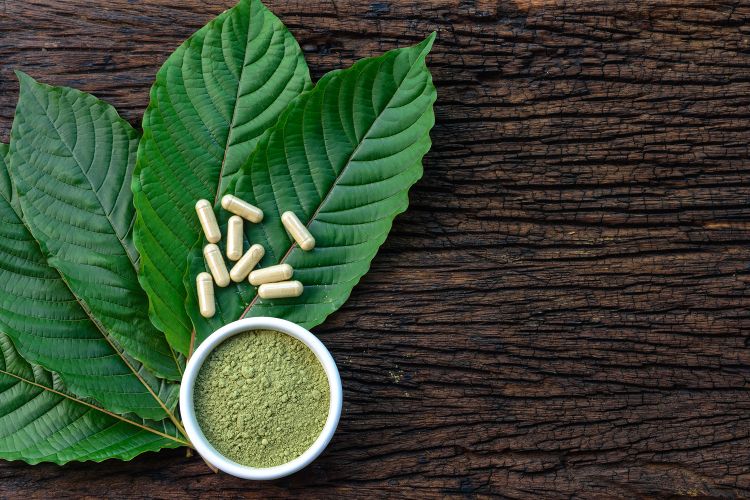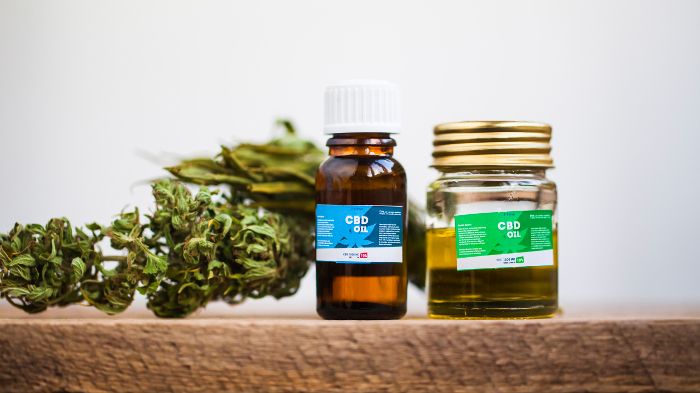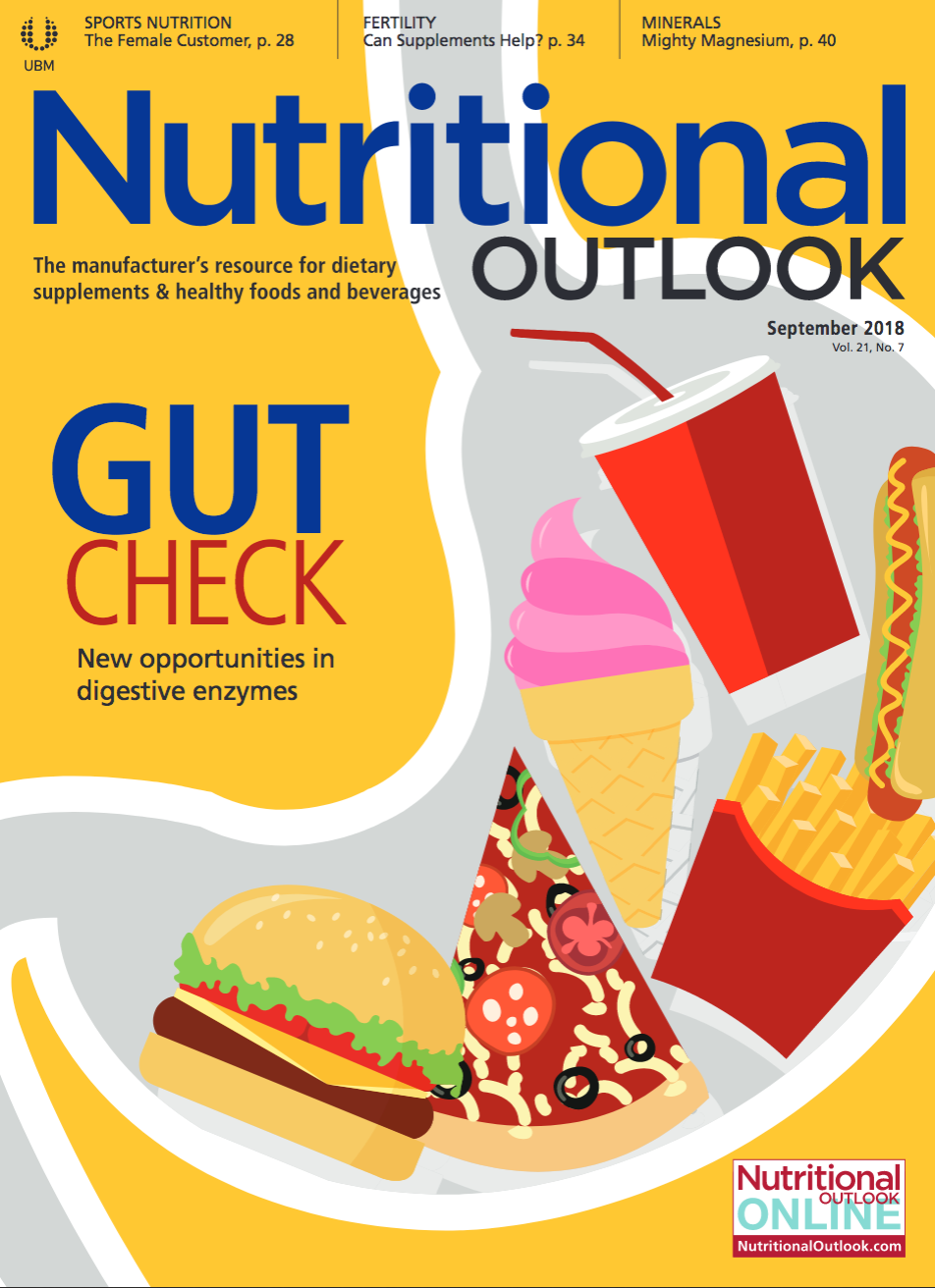Which dietary supplements ingredients are on FDA’s radar?
We asked the experts which ingredients have caught not just retailers’ and regulators’ eyes, but their own.
Photo © Shutterstock.com/Yanawut Suntornkij

Close observers of the dietary supplement industry have their pick of metaphors for describing the sector’s regulatory state-of-play: a jungle, a minefield, a game of whack-a-mole (or gotcha, if you happen to be one of the moles getting whacked). But given the current administration’s inclination toward relaxed regulating, is FDA as ready, able, and willing as ever to take action against supplement ingredients that arouse its suspicion?
As far as attorney Justin J. Prochnow, shareholder, Greenberg Traurig LLP (Denver), can tell, FDA’s eagerness doesn’t always translate into escalated enforcement. “FDA continues to take action against companies selling products with ingredients it believes to be dangerous,” Prochnow concedes. “But I don’t really believe it’s gotten any more heated than before.”
Reactionary Agency
Why not? Chalk it up to the downstream effects of starving the bureaucratic beast. Years of funding and personnel cuts have turned FDA into what Prochnow calls “a pretty reactionary agency” that focuses on ingredients mainly after they capture public-and congressional-attention.
Case in point: In 2010, FDA took action against “the Four Lokos of the world”-namely, Charge Beverages Corp. (Portland, OR), New Century Brewing Co., LLC (Boston), United Brands Company Inc. (Los Angeles), and Phusion Projects LLC (Chicago), maker of Four Loko-for marketing caffeinated alcoholic beverages, “but only after college kids started going to the hospital and congressional representatives started raising issues,” Prochnow says.
“Then about four or five years ago,” he continues, “there was a focus on caffeine in energy drinks and supplements-again when Congress raised issues. And about a year or two ago, FDA sent out warning letters about picamilon”-a nootropic synthesized from niacin and gamma-aminobutyric acid-“after Missouri Senator Claire McCaskill raised issues.”
So with FDA’s enforcement seemingly contingent upon the volume of congressional outcry, it’s no wonder some brands “continue to push the envelope,” says Prochnow, “selling products with the next alternative to ingredients that FDA’s already questioned.”
Functional Foods the New Frontier
The trend has been especially evident in the functional food and beverage space, where a blurring of the boundary with supplements may encourage some brands to pursue ingredients that are common in the latter-activated charcoal, algae, and “medicinal” mushrooms like chaga, reishi, and cordyceps, Prochnow notes-but that aren’t generally recognized as safe (GRAS) for use in foods and beverages.
Yet despite this, “It’s a very rare occasion when FDA actually asks for GRAS confirmation from a brand owner,” Prochnow says. “This cues many companies to push the envelope and include ingredients for which there’s no previous evidence of GRAS. The result is more products on the market with questionable ingredients, leading more companies to think it’s okay to use those ingredients.”
Grey Areas
To be fair, it isn’t always clear which ingredients companies can conclusively consider “okay.”
In the case of dietary supplements, a permissible ingredient must meet the definition of a “dietary ingredient” as spelled out in the Federal Food, Drug and Cosmetic Act-that is, it must be “a vitamin; mineral; herb or other botanical; amino acid; dietary substance for use by man to supplement the diet by increasing the total dietary intake; or a concentrate, metabolite, constituent, extract, or combination of the preceding substances.”
But some synthetic herbal and botanical extracts that would otherwise appear to meet these standards have caught FDA’s attention “because they were never actually constituents of the original plant,” Prochnow explains. And he’s noticed “some difference of opinion” among experts as to whether processing can turn a previously established dietary ingredient into a new dietary ingredient (NDI) for which FDA would require safety notification from the manufacturer before it could appear in a product.
For example, while bitter orange extract is an established dietary ingredient, a bitter orange extract that a manufacturer standardizes to 30% p-synephrine qualifies as an NDI because the amount of p-synephrine that occurs naturally in bitter orange is only about 6%, Prochnow says. “So the view of whether an ingredient requires an NDI notification or not may depend on whose view it is: FDA’s or the private brand owner’s.” (FDA released a revised NDI draft guidance in 2016, and though it falls short of settling all outstanding questions, it at least keeps the conversation going. Read our coverage on it here.)
Clear Boundaries
“I would say the number-one thing FDA could do to make the line clearer is actually to take action and enforce issues like GRAS, or whether an ingredient is a dietary ingredient or not,” Prochnow concludes. “As mentioned, FDA’s regulation is somewhat sporadic and more reactionary than proactive. But tighter enforcement of GRAS and dietary ingredient requirements would result in a clearer demarcation between permissible and impermissible ingredients.”
Adds Sylvia Laman, managing toxicologist for dietary supplements, NSF International (Ann Arbor, MI), “Supplement brands should feel encouraged to reach out directly to FDA when they’re unsure about the regulatory status of a dietary ingredient. In addition, brands should collaborate with companies or individuals dedicated to substantiating the legal status and, more importantly, mitigating the risk associated with all ingredients used in product formulations.”
The Mouse Is Winning
For now, FDA’s hamstrung posture gives the mouse an advantage in this perennial cat-and-mouse chase. “The agency has limited resources and must therefore prioritize acting on consumer safety,” Prochnow says. “Thus, ingredients that might not technically be GRAS are unlikely to be challenged unless safety concerns are raised.”
Paradoxically, brands are as likely to face a challenge these days from commercial retailers like Whole Foods or Target-“both of whom are more vigilant than FDA about ensuring that ingredients are legally permissible,” Prochnow says-as they are from FDA proper.
So with uncertainty the only certainty, we asked the experts which ingredients have caught not just retailers’ and regulators’ eyes, but their own.
Photo © Shutterstock.com/ElRoi

Cannabidiol (CBD)
FDA doesn’t yet permit the food, beverage, or (some argue) dietary supplement use of cannabidiol (CBD), a non-intoxicating cannabinoid constituent of cannabis with proven therapeutic value. So far, their decision is based on what’s going on in the pharmaceutical world.
Yes, marijuana remains on the DEA’s list of Schedule 1 drugs; and yes, CBD’s association with that much-maligned plant continues to cloud its reputation. But FDA’s beef with CBD stems less from the agency’s reefer madness than from an investigational new drug (IND) application that GW Pharmaceuticals (Cambridge, UK) filed for a CBD isolate in 2006. And as Greenberg Traurig’s Prochnow explains, “If an ingredient was investigated as a new drug prior to being used in a supplement, food, or beverage, it’s then precluded from being used in those products.” (In June, FDA went full steam and approved GW Pharma’s Epidiolex CBD drug, the first drug the agency has approved for those with a rare form of epilepsy called Dravet syndrome.)
Prochnow emphasizes that this IND-based prohibition differs from “an express law” prohibiting CBD’s use-as would be the case with, say, a targeted regulation prohibiting the use of ephedrine alkaloids in supplements. “With CBD, it’s FDA’s opinion and interpretation of the law that precludes use,” Prochnow says. “But many in industry disagree with FDA and are prepared to challenge it.”
And how. Following the Epidiolex approval as a new drug, and while the agency maintains its position that CBD is not a permissible ingredient, agency personnel have confirmed that FDA “must prioritize enforcement activities with a likely focus on products making express disease-treatment claims-as for, say, cancer or epilepsy,” Prochnow says.
The upshot: FDA has issued roughly 20 warning letters to companies selling products that contain CBD, but in each letter it’s the companies’ explicit disease claims that FDA takes exception to. “They’re less likely to take action against companies making either structure-function claims or no claims at all,” Prochnow notes.
In any case, opponents are running out of reasons to justify CBD’s continued prohibition. “As more information comes out, it seems it’ll be harder for FDA to keep CBD off shelves,” Prochnow predicts. “Obviously, the age-old view of marijuana and cannabis as ‘dangerous drugs’ is continuing to evolve as more states legalize it.”
Still, he counsels companies to “proceed with some caution.” With FDA telegraphing its focus on disease claims, he suggests that companies pressing the issue pay careful attention to labeling and advertising efforts.
“This is probably the most changing area of regulation and enforcement in the FDA spectrum,” Prochnow says. “Weekly, if not daily, we see new announcements about congressional bills being passed. FDA regulation-the status quo now-will likely not be the status quo at year’s end.”
Photo © Shutterstock.com/Yanawut Suntornkij

Kratom
If you haven’t heard of kratom, you haven’t been paying attention. After all, says John E. Villafranco, partner, Kelley Drye & Warren LLP (Washington, DC), “It’s all over the news.”
Known botanically as Mitragyna speciosa Korth., kratom is a tropical plant in the coffee family native to Southeast Asia with a long history of medicinal use for its purported stimulant effects at low doses and sedative ones at high. Advocates praise it as a pain killer, diarrhea medicine, recreational drug, and even treatment for opioid addiction.
Yet, says Villafranco, “Kratom has a very loyal and vocal following, as well as powerful adversaries.” As evidence of the latter, FDA issued warning letters in May to three kratom marketers responsible for a total of 68 products-Front Range Kratom (Aurora, CO), Kratom Spot (Irvine, CA), and Revibe Inc. (Kansas City, MO)-alleging their illegal sales of unapproved kratom-containing drug products with unproven claims to treat cancer and opioid addiction and withdrawal, relieve pain, lower blood pressure, and reduce neural damage from stroke.
And as with CBD, FDA’s chief complaint is with the drug claims-“not kratom’s capacity as a dietary ingredient,” Villafranco says. “Kratom marketers are making very strong claims related to cancer, diabetes, blood pressure, chronic pain, improved immune response, stroke treatment, neurological disease treatment, and mood enhancement,” he says. Such claims lie outside the structure-function realm that law permits for dietary supplements.
Complicating things further is kratom’s presence in the opioid treatment space, which Villafranco calls “a lightning rod, considering the extent of this country’s opioid epidemic.” Because FDA considers kratom an opioid analogue, the agency believes it may actually contribute to opioid addiction rather than help curb it, Villafranco adds.
Six states have already banned kratom, and it wouldn’t surprise Villafranco “to see that list grow in future months.” But don’t discount the substance’s “fiercely loyal following,” he argues. “Industry groups estimate there being 3 to 5 million kratom users nationwide, and they’re organized. Just last week, the Kratom Community Grassroots, a nonprofit advocacy organization, led a week of advocacy on Capitol Hill. They appear to have a head of steam and aren’t shying away from a fight. So we shall see.”
Is FDA’s concern justified? “Hard to say until we’ve seen the science,” Villafranco concludes. “Certainly, a lot of consumers swear by kratom products. But their endorsement isn’t enough. Government agencies need to evaluate the substantiation. So do marketers considering taking a kratom product to market. They’ll need to rely on competent and reliable scientific evidence to make health claims. And they’ll need to comply with the law if they insist on making drug claims.” (Read more on FDA and kratom here.)
Photo © Shutterstock.com/Dmitrij Skorobogatov

Caffeine
Demonstrating a flair for understatement, Prochnow describes caffeine’s regulatory history as “very interesting.” He can say that again.
While the compound occurs naturally in everything from coffee and chocolate to kola nut extract, when added to a cola-type beverage as an ingredient, caffeine falls under the strictures of the Federal Food, Drug and Cosmetic Act. And per that act, caffeine in amounts not exceeding 0.02% (200 ppm) is considered generally recognized as safe (GRAS).
“This doesn’t mean you can’t use it in other products,” Prochnow notes, “but it must be established as GRAS through the GRAS self-affirmation process to go into use legally.” And that’s precisely what a number of companies have done.
But within the past few years, concerns have surfaced in Congress questioning caffeine’s presence in applications ranging well beyond the usual territory of coffee, tea and, as Prochnow calls it, “soda pop.” And though detractors initially set their sights on all caffeinated products, their efforts eventually shifted to those marketed toward children, with calls to limit levels, implement warnings, and impose other restraints in tow.
But congressional and media attention notwithstanding, “FDA has essentially come out and stated that caffeine in amounts around 400 mg or less per day is not unsafe for healthy adults,” Prochnow says. Prioritizing safety over scare tactics, the agency targeted caffeine in alcoholic beverages as non-GRAS (see above re: Four Loko), and more recently took action against makers of highly concentrated forms of caffeine powder, citing safety concerns.
Ultimately, though, FDA’s greater interest was in stemming the potential proliferation of caffeinated products across categories, including snacks, syrups-“even foods like waffles,” Prochnow says-with the theory being that consumers would have a harder time keeping track of their daily intake if the compound were coming at them from all directions.
As for whether the concerns have merit, Prochnow believes that those related to alcohol, children, and high concentrations do. “Otherwise,” though, “at some point, we have to let people regulate themselves.”
Photo © iStockphoto.com/royaltystockphoto

Probiotics
Probiotics have been such a supplement success story that, on one hand, it’s almost unimaginable that they’d be the subject of regulatory skepticism.
But on the other, it might be precisely their success that has watchdogs looking more closely at these “good gut bugs,” and at how marketers are formulating with them and disclosing information about them.
Notes NSF’s Laman, “From a certifier’s perspective, labeling and safety substantiation for products formulated with probiotics may be inconsistent from brand to brand.”
But absent direction on how best to evaluate the acceptability of probiotic dietary ingredients, she says, “supplement brands may consider it a pass to create their own standard. This could lead to probiotics being used in supplement formulations with potentially inadequate substantiation that they’re legal dietary ingredients, or that the strains are reasonably expected to be safe at the recommended daily dose.”
So trade associations and regulators worldwide are reaching the consensus that probiotic ingredients “should be labeled,” Laman says, “and that risk associated with exposure should be mitigated at the strain level.” Meanwhile, industry and certifiers continue to work with regulators “toward clear guidance on probiotics in an effort to relieve the confusion that supplement brands are experiencing.”
Photo © Shutterstock.com/Andrey Burmakin

SARMs
Because the desire to grow fitter and stronger with a minimal input of effort is likely universal-and maybe even inevitable-there will always be a market for products that contain ingredients like SARMs (selective androgen receptor modulators).
But while these steroid-like compounds are no stranger to performance-enhancing products, they’re also associated with such safety concerns as liver damage and increased risk for heart attack and stroke. And as far as FDA is concerned, they’re unapproved drugs, which is why the agency issued warning letters late last year to Infantry Labs LLC (O’Fallon, MO), IronMagLabs (Henderson, NV), and Panther Sports Nutrition (Garfield, NJ) for distributing products containing SARMs.
Now Senators Orrin Hatch (R-UT) and Sheldon Whitehouse (D-RI) have introduced legislation that would not only place SARMs under the Drug Enforcement Administration’s purview per the 2014 Designer Anabolic Steroids Control Act to cover SARMs, but would add SARMs to the list of Schedule III drugs and prohibit their illegal import, export, manufacture, and distribution.
While an analysis on Govtrack.us gives the bipartisan SARMs Control Act of 2018 a 3% chance of being enacted, the legislation has no dearth of support from within the supplement industry. In the wake of the act’s introduction in April, leaders of organizations including the American Herbal Products Association (Silver Spring MD), the Consumer Healthcare Products Association (Washington, DC), the Council for Responsible Nutrition (Washington, DC), the United Natural Products Alliance (Washington, DC), and the U.S. Anti-Doping Agency (Colorado Springs, CO) released a joint statement directed at the bill’s sponsors pledging “to work with you and all of Congress to deliver a strong bill to the President.”























